The western side of the Olympic Mountains is a sight to behold, with crashing waves along the rocky coast and mossy trees in the rain forest signifying the impressive amounts of precipitation that falls in this area. The ongoing Olympic Mountains Experiment (OLYMPEX) is set up to measure rain and snow over the ocean up to the highest mountain peaks using airborne and ground-based instruments. As part of this project, NASA’s ground-based weather radar, NPOL, sits atop a hill on the Quinault Indian Reservation, with clear views out over the ocean and up the Quinault valley toward the snowy mountains.
As a Seattle resident, I, Dr. Angela Rowe, spend a lot of free time exploring the forests of the Olympic Peninsula. As a Research Scientist in the University of Washington’s Department of Atmospheric Sciences, I spend my work day (and honestly a good bit of my free time) using weather radar data to better understand storms around the world. To have the opportunity to combine both of my passions into one project seems too good to be true.
On a drizzly, foggy morning, I pack up my truck with supplies (water, canned soup, a warm blanket) and drive 20 minutes to the radar site. Half of this journey involves ascending a steep road prepared just for this project. It’s a slow-going trip as the creatures of the peninsula (deer, coyotes, rabbits, etc.) could jump out at any moment. It’s also worth driving a little slower to take in the eerily beautiful scene.
I reach the radar to see the site blanketed in cloud. My view may be limited, but the NPOL radar can “see” out to nearly 135 km (> 80 miles).
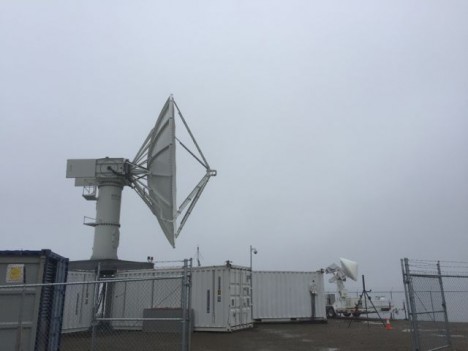
The NASA NPOL and D3R weather radars scan the clouds. NPOL’s frequency is best for looking at precipitation, while the D3R’s dual frequencies are better suited for thin, nonprecipitating clouds than NPOL. (Photo credit: Dr. Angela Rowe, UW)
NPOL sits atop 5 containers, which were used to ship the radar out to the site. One of these containers serves as the “office” for the radar scientists on duty. With 12-hour shifts (the radar operates 24/7), it’s important to find a way to get comfortable in this space, shared with several other scientists.
The NPOL radar scientist occupies the back left corner of the trailer, where we have a laptop set up to record and analyze data. Real-time displays of the data sit to my left so I can keep a watchful eye to make sure all is running smoothly. The radar engineer on duty is nearby in an adjacent trailer, waiting to help if things go awry.
In addition to monitoring and analyzing radar data, the radar scientist on duty is also responsible for helping launch “soundings”. There is an instrument (called a radiosonde) that is attached to a large balloon which is then released into the atmosphere at a specified time. Data is transmitted back via an antenna located near the radar, providing us with vertical profiles of temperature, humidity, pressure, and winds throughout the atmosphere. This is a routine task under most circumstances, but on the stormy days we are studying for OLYMPEX, the wind and rain can add some obstacles. On this day, with over 30 mph winds out of the southwest and heavy rain at the site, it took four of us to launch the sounding, sliding along the muddy ground as the balloon pulled us toward the northeast.
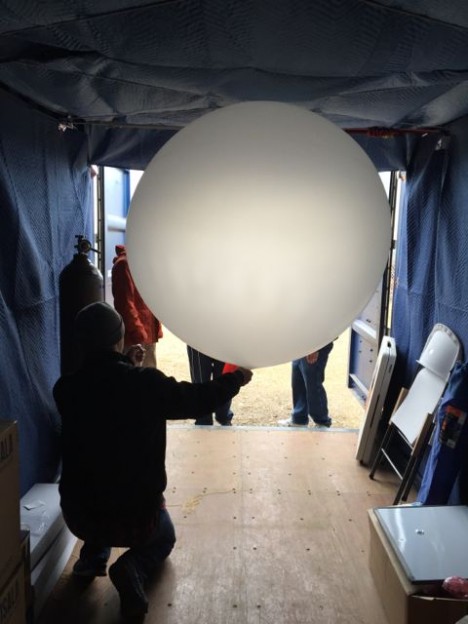
The balloon is inflated with helium in another one of NPOL’s trailers, after which the instrument is attached and we head outside to launch the sounding. (Photo credit: Dr. Angela Rowe, UW)
After a successful launch, high fives seemed appropriate as we went back into the trailer, took off our rain gear, and began to watch the sounding data come in. This information serves as the environmental context for our radar observations. How is the wind profile affecting the storms? How are the storms feeding back on the temperature and moisture levels of the environment? At what level in the atmosphere is the snow turning to rain? Is that level the same across the area? How are the mountains playing a role? These are important questions we are trying to answer at the NPOL/sounding site.
In 3 hours, it’s time to put on our rain gear again (the OLYMPEX version of a scientist’s lab coat) and prepare to launch another balloon. It’s cold, wet, and windy,…and we wouldn’t want it any other way.
At the end of the 12 hours, I head back out into the rain for the final time that day. It appears that I’m not the only one excited about the rainy day, as a northwestern salamander was sitting outside the trailer!
I leave the residents of the NPOL site behind and slowly drive back down the dark, winding road, reflecting on the exciting day and ready to do it all again tomorrow.




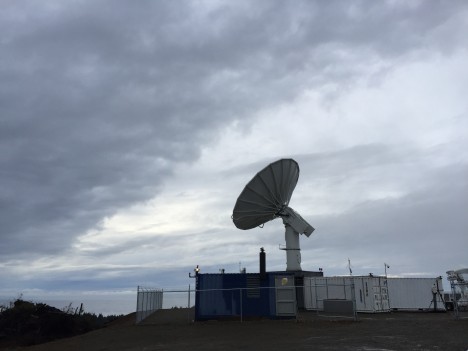
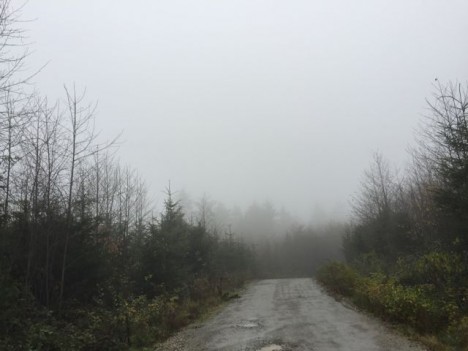

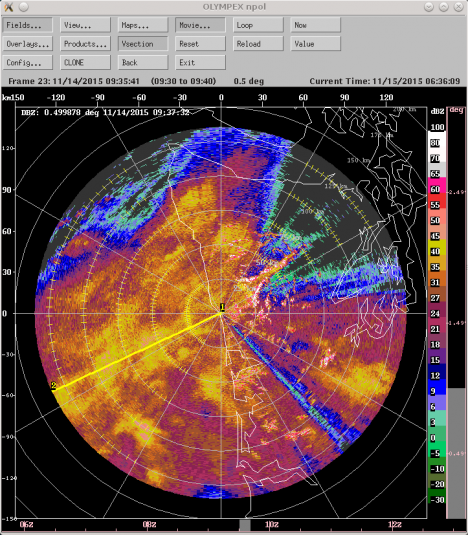



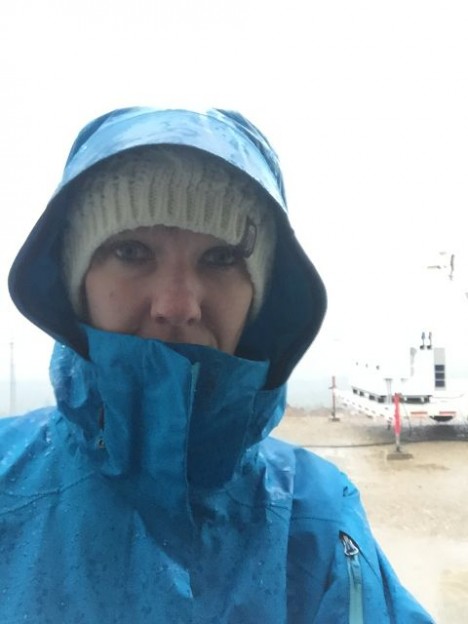

I’m enjoying these updates. Happy Thanksgiving to everyone.
Jim
Happy Thanksgiving to you as well, Jim! We had a rain-free day on Thanksgiving, which allowed the OLYMPEX crew to enjoy a day off with family, friends, coworkers,… Glad to hear you are enjoying these posts.
My classes have been following Olympex on the MTSE site and trying to learn more about the NPol, D3R, and EC-x radars and we were wondering… is the data from the D3R sent to the same trailer where you stay, or is it sent/monitored elsewhere with another team?
Thanks…
Great to hear that you and your students have been following the project. The D3R team are also located in the science trailer with the NPOL scientists. The data is being stored locally as well as being sent to an offsite database. The instrument, data, and crew are based out of Colorado State University for this project.
Dear Angela
We had been in the Olympic-Mountains for hiking some years ago. What a wonderfull rainforest and what huge, old trees! And than those enormous Banana-Snails, never seen bevor such large exemplars. We hope, we can stay there once more!
Congratulations for your important researches.
We wish you a Merry Christmas and a Happy New Year
Heidi & Peter from Switzerland